Five Benefits of Smart Thermostats
Posted on by WestAIR Heating & Cooling
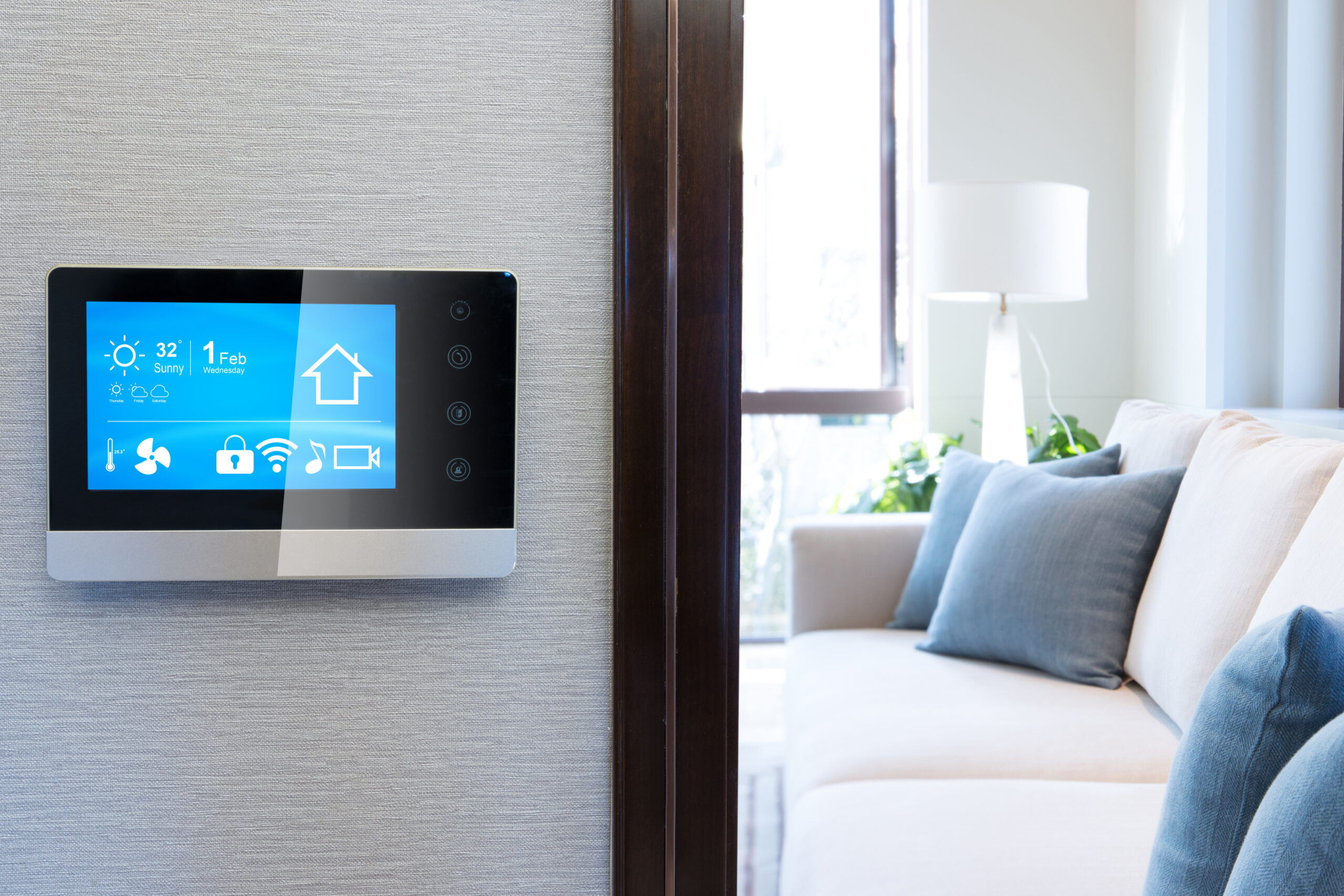
Spring has begun, and it won’t be long before the summer heat has your air conditioning working overtime to keep you cool. You may be dreading those summer energy bills, but what if there was a way to lower your energy bills and keep you comfortable all year long? A smart thermostat can do that and more. Keep reading to learn five benefits of smart thermostats.
Smart thermostats adjust automatically.
Perhaps the greatest functionality of smart thermostats is their ability to adjust temperature and settings based on your routine and other factors. You’ll need to adjust the settings manually for the first week or so, but it will quickly learn what temperature you prefer your home to be at certain times of the day. Some models have motion sensors and can detect when you leave the house and when you return. These models can even adjust temperatures in certain rooms by detecting which rooms you spend time in and when.
Smart thermostats will also account for outside temperature and the size of your home. But you can always program a heating and cooling schedule yourself and adjust the temperature at any time if you prefer. The result is a home that’s always optimized for comfort and energy use at any point in the day.
Control your settings remotely.
With a smart thermostat, you never have to worry about your settings while you’re away from home. Most smart thermostats can be controlled by an accompanying app on your smartphone, meaning you can check and change the temperature from anywhere. This can come in handy if your schedule unexpectedly changes or you forgot to adjust the settings before leaving on a trip. Perhaps you’ve come home from a trip to find that your house sitter turned the A/C or heat up dramatically, leaving you with an abnormally high energy bill. With a smart thermostat, you can always keep an eye on your settings and change them whenever you need to.
Receive important notifications.
Smart thermostats keep you informed by sending alerts and reminders directly to your smartphone or email inbox. Receive alerts when it’s time to change your air filters or batteries, so you’re never caught off guard by a maintenance issue. Many smart thermostats will also notify you of power outages and extreme temperatures inside your home. You can even track your home’s energy use and patterns, helping you find more ways to increase efficiency and comfort.
Improve air quality.
Maintenance reminders like air filter alerts help keep your HVAC system in perfect working condition, ensuring your air stays clean by reducing the risk of harmful pollutants. In addition to tracking temperature and energy use, smart thermostats can monitor indoor humidity and make necessary adjustments. Some models, like the VisionPRO® 8000 from Honeywell®, can even control a humidifier or dehumidifier to keep the air quality and moisture at just the right levels.
Lower your energy bills.
We’ve seen how the benefits of smart thermostats will increase energy efficiency, optimize comfort levels, and give you complete control over the temperature in your home. All these factors work together to help you save money on your energy bills, no matter the season. Smart thermostats won’t waste energy on heating or cooling your home while you’re away, they can automatically adjust based on which rooms are occupied, and you can always adjust the settings remotely if your schedule changes. Smart thermostats afford you more comfort and more savings.
Take control of your home with a smart thermostat from WestAIR.
The benefits of smart thermostats go far beyond what we’ve discussed here. If you’re ready to take your home’s energy efficiency and comfort to the next level, contact WestAIR. We offer a wide range of Honeywell® advanced T-Series and VisionPro® units to put you in control of your home’s temperature and energy costs. Contact us today to learn more.
This entry was posted in Air Conditioning,Energy Savings,Heating,Thermostats and tagged Energy savings, Smart Thermostats, WestAIR Heating & Cooling
Eight Ways to Lower Your Heating Bill This Winter
Posted on by WestAIR Heating & Cooling
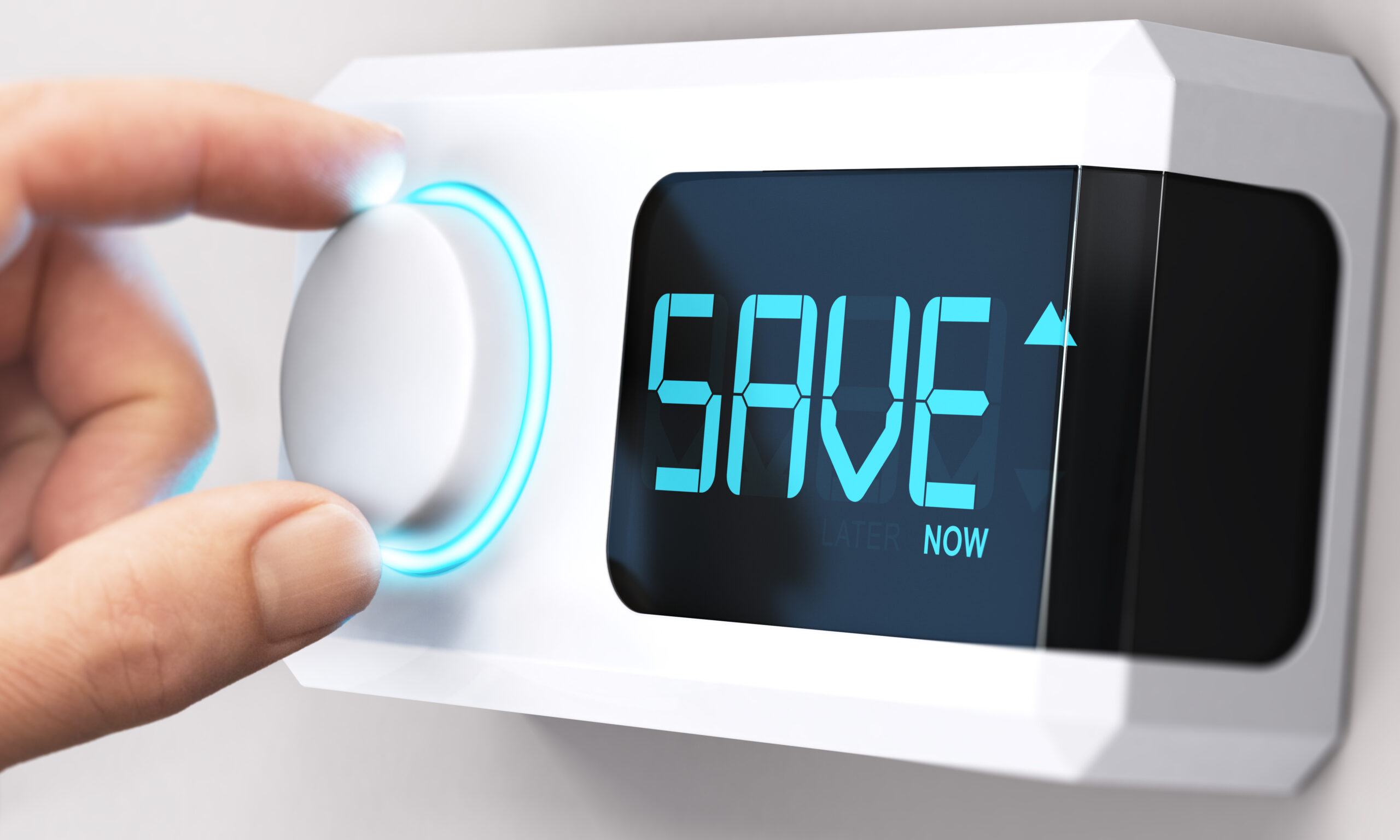
Winters are cold in the upper Midwest, and with energy prices on the rise, winter utility bills can be costly. Like many others, you may be wondering how to lower your heating bill. Fortunately, there are many energy-saving strategies to employ during the colder months. Let’s take a look at eight ways to save money on heating this winter!
1. Turn Down the Thermostat.
It seems obvious, but keeping your thermostat at a lower setting is the best way to reduce your heating bill. You don’t need to let yourself freeze, but even turning down the heat a couple degrees can bring significant savings in the long run. Most people are also more comfortable with cooler temperatures while they sleep, so turning it down every night is an easy way to save energy and money. And don’t forget to turn it down while you’re away at work, so you’re not spending money to heat an empty home! A smart thermostat makes it easy to program a regular heating schedule.
2. Wear Warm Clothes.
Another simple solution to the winter cold is to bundle up. If you’re used to wearing shorts and a T-shirt in your home all year long, you might want to consider putting on a few more layers. Warm bedding and extra blankets will also keep you warm at night. These are less expensive alternatives to cranking the thermostat on cold days.
3. Open (And Close) Your Blinds.
Take advantage of every natural heat source, including sunlight! Opening your curtains and shades on a sunny day heats your home even when it’s freezing outside. Just make sure to close them again when the sun goes down, as windows can also let in cool air.
4. Turn On Your Ceiling Fans.
Wait, don’t fans keep you cool? Fans are usually set to rotate counterclockwise, which brings cold air up from the floor to cool off a room. But if you switch the rotation to clockwise, it will push down all the warm air from the ceiling to distribute it more evenly throughout your home.
5. Seal off Air Leaks.
Windows and doors are major culprits when it comes to allowing warm air out and cool air in. Inspect them carefully for gaps or peeling weather stripping. It’s relatively easy to repair these leaks with some simple caulking, but you can also hire a professional for added assurance. While you’re at it, make sure your attic is well-insulated. Gaps can decrease your home’s energy efficiency.
6. Take Care of Your Heating System.
If your HVAC system isn’t functioning at optimal efficiency, it will have to work harder to heat your home, raising your energy bills. Check your furnace filters regularly—many types of filters should be cleaned or replaced every 30-60 days. You should also have your complete system checked annually by a qualified service technician to avoid costly repairs down the road.
7. Use a Humidifier.
Winter brings cold, dry air, which can cause eye irritation, chapped lips, dry skin, and other unpleasant issues. A humidifier combats these health concerns while also making your home feel warmer since humid air carries more heat than dry air. Not using a humidifier can also dry out the wood in your home, shrinking the wood framing around doors and windows and creating gaps for air to flow through.
8. Install Radiant Floor Heating.
An in-floor heating system can save you up to 40 percent on your heating bill by distributing heat more evenly throughout your home. Unlike forced-air heat, radiant heating reaches every nook and cranny and warms anything on the floor, including furniture. You can even zone off different areas to add increased comfort in rooms like bathrooms, kitchens, and basements.
Contact WestAIR to Maximize Your Home’s Energy Efficiency.
Our professional technicians are experts in servicing and installing furnaces and HVAC systems. We’ll make sure everything is functioning properly so you can have peace of mind. If you’re thinking about installing a new furnace or heating system, we’ll present your options and help you make the best decision for your home and budget. Remember to follow these eight tips to lower your heating bill and contact us today to start saving!
This entry was posted in Energy Savings,Heating,Tips and tagged Energy savings, Heating, Tips & advice, WestAIR Heating & Cooling
Local HVAC Services and Solutions for Total Indoor Air Comfort
Posted on by WestAIR Heating & Cooling
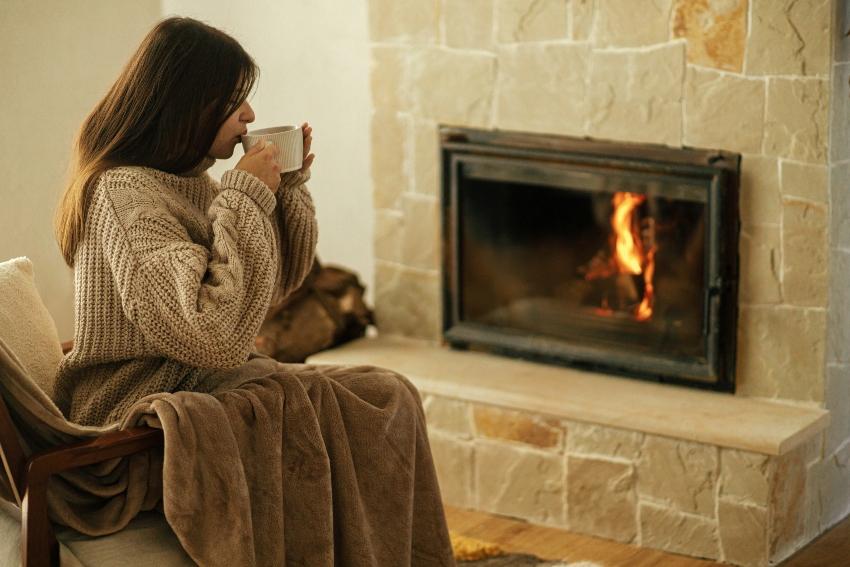
When it comes to weather, in Minnesota, we live in a state of extremes. That’s why we rely on our homes to provide an oasis of clean air and cozy temperatures all year long. And WestAIR Heating & Cooling has you covered. Read on to learn more about the HVAC services and solutions we offer as your local source for total indoor air comfort.
Home Heating Solutions
The snowy and bitterly cold winters make reliable, efficient heating systems vital to our comfort, health, and safety. WestAIR offers a full range of solutions, and our expert technicians will help you find the perfect fit for your home and provide professional installation.
- High-efficiency furnaces warm your entire home in the most cost-effective way, leading to lower energy bills. Additionally, qualifying systems allow you to claim a federal tax credit.
- Radiant floor heating provide heat from the ground up instead of via forced air through vents, which eliminates air loss in ductwork. This also means dust and allergens aren’t being blown into the home and decreasing air quality.
- Gas fireplaces allow you to add beauty as well as comfort. Our experienced technicians will help you choose the right model, style, and finishing touches to optimize performance and ultimately boost your home’s value.
- Unit/garage heaters let you use your garage for more than parking. By keeping the space warm, it can be used for year-round storage, social and recreational activities, hobbies, and more.
Home Cooling Solutions
While our air is extremely cold and dry, the summers are full of heat and humidity. But don’t worry—we provide the same level of experience and expertise when it comes to home cooling solutions.
- High-efficiency air conditioning (A/C) systems deliver cost-effective cooling while also helping maintain proper humidity levels. And just like the furnaces mentioned above, many will qualify you for a federal tax credit.
- Ductless mini-split A/C systems require no ductwork, making them ideal for homes/spaces where adding ducts is impractical or too expensive. They can also provide heating as well as cooling.
HVAC Efficiency and Indoor Air Quality Solutions
Indoor air quality (IAQ) affects comfort as well as overall health. Rely on WestAIR to help ensure the air inside your home is both clean and cozy.
- Air exchangers help remove stale, unhealthy indoor air while simultaneously providing fresh, pre-filtered outdoor air.
- Air cleaners do just what the name implies: They clean the air by trapping harmful airborne particles before they can pollute the home and be breathed in by you and your loved ones.
- Whole house humidifiers maintain relative humidity levels, helping avoid dry-air issues such as dry skin, cracking/warping of furniture and wood, and inefficient heating.
- Programmable/setback thermostats allow you to pre-set temperature and humidity settings for multiple days. This allows you to maintain cost-effective comfort without constantly having to adjust the thermostat.
- Automatic zoning systems separate your home into zones that can be individually controlled. That way, you don’t have to waste energy and money heating/cooling areas that are rarely used.
- Ultraviolet (UV) light air purification systems work in conjunction with your current HVAC to eliminate viruses, bacteria, mold, and other harmful airborne pathogens for improved IAQ.
HVAC Maintenance Services
As your local source for all things HVAC, WestAIR also provides a full range of professional maintenance services:
Your home should be a private escape from the extremes of Minnesota weather. We’re here to help make the best decision for you and your home, as well as ensure your systems run at peak performance and efficiency.
Contact WestAIR today to learn more about our HVAC services and solutions for total indoor air comfort.
This entry was posted in AC,Air Cleaners and Purifiers,Air Conditioning,Cooling,Duct Cleaning,Energy Savings,Furnace,Health Tips,Heating,Humidifier,Humidity,HVAC Maintenance,Indoor Air Quality,Repairs,Tips,Winter and tagged Furnace, Heating, Home Cooling Solutions, Home Heating Solutions, HVAC Services, HVAC Solutions, Indoor air quality, Service, Thermostat, Tips & advice, Total Indoor Air Comfort, WestAIR, WestAIR Heating & Cooling, WestAIR Services
Top Tips for Winter Heating this Season
Posted on by WestAIR Heating & Cooling
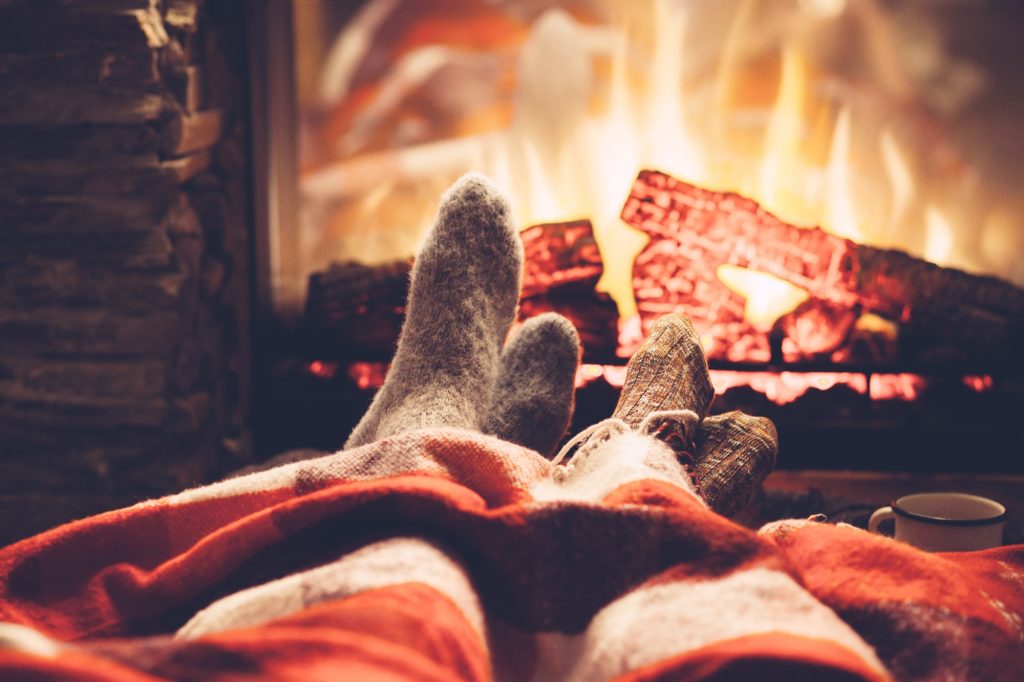
As we watch the leaves fall off the trees and the snow come down, we can’t help but know that the seasons are changing, and fall is coming to an end. Homeowners must start thinking about how they are going to stay warm during this cold time of year. Along with winter comes the higher cost of heat and living. We here at WestAIR Heating & Cooling would like to give you a few tips for winter heating this season.
Purchase a Smart Thermostat
The year is 2022, smart devices are slowly taking over the world as we know it. Why not add another smart device that helps control the temperature of your home? A Wi-Fi enabled smart thermostat can be controlled from anywhere at any time using your smartphone. They track your movement and location. They know when you are away and when you are home. The ideal temperature for your house to run at is between 68 and 72 degrees. They help you to track your energy usage and can tell you when you are saving energy which can lead to lower utility bills in the long run.
Don’t Heat an Empty or Sleeping House
When you leave the house in the morning, you concentrate on getting ready, packing the car, and getting to your destination on time. One more thing you can add to that list is turning down the heat. You shouldn’t heat an empty house. You can save money on energy and your heating bills by simply lowering the heat by 7 degrees. We often have too much going through our heads to remember to turn the heat down, so if you are rushing out the door, your smart thermostat will know you’re gone and turn the heat down for you. You can also adjust the heat settings on your smart phone through an app. It’s proven that cooler temperatures will help your health. The cooler the room, the deeper your sleep, the greater your REM sleep is, and the faster you will fall asleep.
Put Your ceiling Fan in Reverse
Ceiling fans are nice for cooling down the house in the summer, but they also help to warm up your house in the winter. Once you flip the switch on your fan, the blades will start rotating clockwise. This will help bring the cold air towards the ceiling and push the warm air from top to bottom. This will help to keep your living space warm and cozy without putting a big dent in your pocket.
Contact your WestAIR HVAC Specialist
Purchasing a smart thermostat, putting your ceiling fan in reverse, and not heating an empty home are just a few tips and tricks you can use for winter heating this season. The professionals at West AIR want you to have reliable, efficient heating solutions that will last for many years down the road. If you think your HVAC system isn’t running correctly, or you need an annual maintenance inspection, contact WestAIR Heating & Cooling today.
This entry was posted in Heating and tagged ceiling fan, Heat, Heating, Home Heating, house, HVAC, Smart thermostat, Thermostat, Tips & advice
Fall Maintenance Checklist
Posted on by WestAIR Heating & Cooling
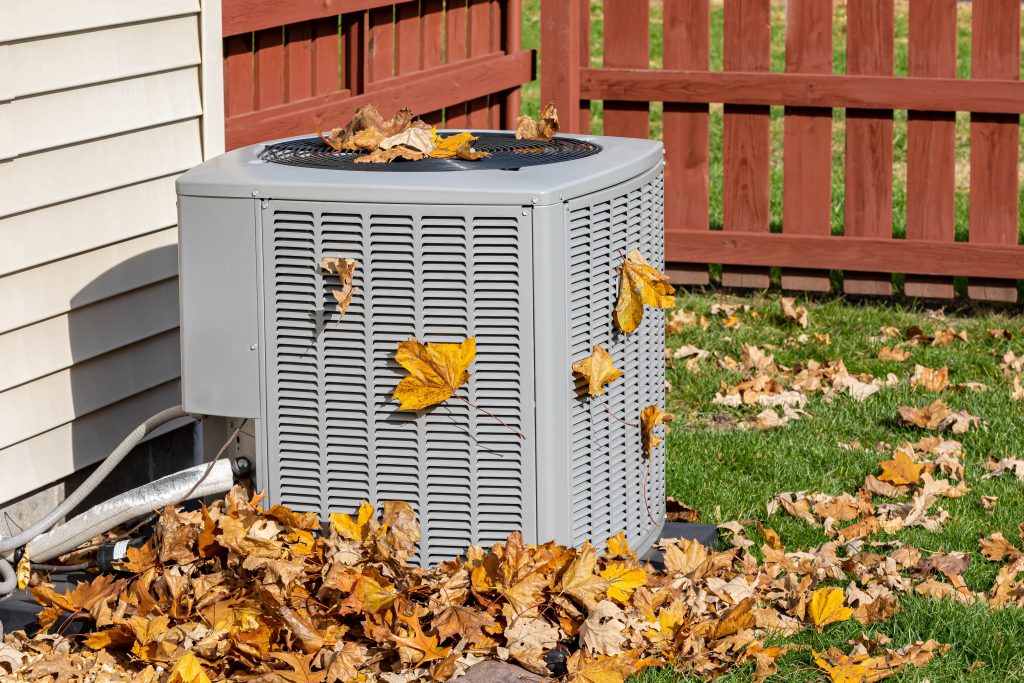
Fall is in the air and sweater weather is upon us. As you prepare your house with fall decorations like signs, pumpkins, and, of course, autumn scented candles, you may want to consider putting a few other things on your fall to-do list. Follow along in our blog to learn more about what you should put on your fall maintenance checklist.
Debris-Free AC and Heating
As you think about turning off your air conditioner and opening those windows, don’t forget about cleaning your HVAC unit for wintertime. The weather may be getting cooler, but you sure don’t need a broken furnace over the winter. Debris such as dust and pests can build up in your ductwork. This type of debris can be hazardous to you and to your home. So, get your ducts cleaned out for the start of winter. The same goes for your air conditioning. Unwanted debris could clog coils and damage your AC.
Check Your Air Filters
It’s true, you will be opening your windows more as the weather gets cooler, but once the snow starts to hit the ground, it’s time to turn the heat on. Make sure you are changing your air filters regularly. Changing your air filter helps keep a cleaner home, helps your health, it improves your HVAC system, and produces fresh indoor air.
Air Duct Cleaning
Get your cleaning gloves ready because it’s time to shine those air ducts. Your ducts need a good cleaning because the amount of time you are spending at home inside will increase. It will also help you to save energy in the long run. An air duct cleaning will help combat allergies and asthma, and it will help fight off any other sicknesses. If you don’t think you can clean your air ducts yourself, the professionals at West AIR Heating & Cooling are here to help.
Schedule a Fall Maintenance Visit
As summer comes to an end and you start thinking about all the fun things you are going to do in the next coming months, don’t forget about your annual fall cleaning. Checking your air filters, cleaning debris, and air duct cleaning are some of the things to make sure to have on your fall maintenance checklist. Contact WestAIR Heating & Cooling for all your fall maintenance needs.
This entry was posted in AC,Air Conditioning,Cooling,Duct Cleaning,Heating and tagged Cooling, Duct cleaning, Heating, Indoor air quality, WestAIR Heating & Cooling
Stay Warm, Reduce Energy Costs This Winter
Posted on by WestAIR Heating & Cooling
In a previous blog, we introduced energy-saving ideas to help keep your home cozy even on those blustery days. Since the weather outside is sure to gradually become frightful, we thought now would be a good time to offer new suggestions and reintroduce valuable tips to stay warm and reduce energy costs this winter.
Adjust Your Thermostat
When you’re asleep or away from home, turn down the thermostat to save energy. According to the U.S. Department of Energy, setting your thermostat seven to 10 degrees lower for eight hours can save as much as 10 percent on your heating bill.
Additionally, you can keep the thermostat slightly lower even when you’re awake by adding another layer of clothing. Grab a hoodie or a thick pair of socks and stay comfortable without having to crank up the heat.
Execute General Maintenance
Scheduling an annual tune up for your furnace will keep things running smoothly and efficiently. A system that’s well cared for will run better and last longer, saving you time, headaches, and money.
Between tune-up appointments, be sure to check and change the air filter. A clogged filter causes the furnace to run less efficiently and work harder to push air through, leading to undue wear and tear. This simple task also helps prevent operational issues and extends the life of your furnace.
Protect Your Water Heater
The water heater accounts for about 17 percent of energy usage. Insulating unit will help it run more efficiently, reduce heat loss, and keep costs down.
Check the Flooring
If you have tile or hardwood flooring, an easy way to save energy during the winter is to throw down a rug. That extra layer of insulation traps cold air underneath, keeping your home (and your feet) warmer while keeping energy use low.
Also, check to make sure the heat vents are clear and clean. Furniture, drapery, and debris can block the flow of heat coming from the vents. Unobstructed vents help keep warm air flowing and your furnace running at regular intervals.
Use the Sun’s Power
Give your furnace a break and take advantage of the sun’s warmth to help heat your home during the day. Open the blinds or curtains to let in some sun – and the heat. Your home will be toasty without your furnace doing any extra work. Just be sure to close the drapes as nightfall sets, to help keep that warm air from escaping.
Swap Out Light Bulbs
LED bulbs use about 75 percent less energy than standard incandescent bulbs. Swap out your old bulbs for LEDs this winter and watch the energy savings add up.
Block Out Cold Drafts
Installing storm windows over the existing windows can help seal off drafts, keeping the cold air out of your warm home. Otherwise, try shutting out cold drafts with a window insulation kit. Adding a thin layer of plastic film can help the house feel warmer and save up to 15 percent on energy bills.
Trust the Team at WestAir
The full-service team at WestAir Heating & Cooling is here to help you stay warm and reduce energy costs this winter. We provide high quality heating (and cooling) systems and solutions all year round as well as preventative maintenance to keep those systems running effectively and efficiently. Contact our knowledgeable experts today with your winter heating questions or to schedule service.
This entry was posted in Energy Savings,Heating,Winter and tagged Cut Costs, Energy savings, Save Energy, Winter, Winter Heating Tips
Benefits of Heating Your Garage
Posted on by WestAIR Heating & Cooling
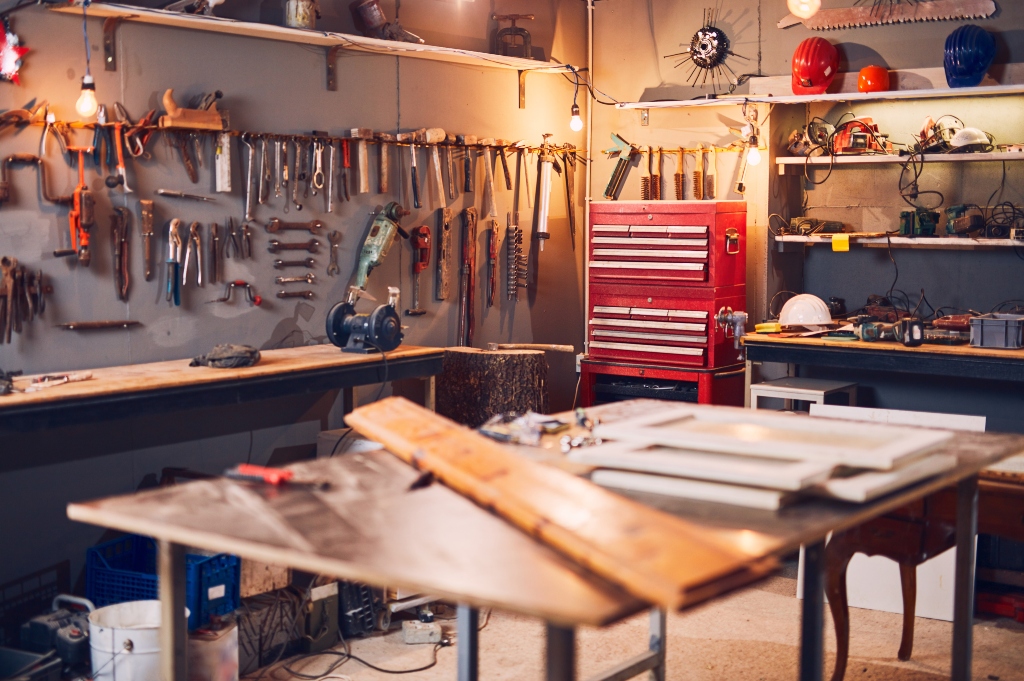
When you think about heating your home, you likely zero in on the traditional, indoor living space. But what about the garage? Today’s garage is more than simply a place to park the car or store tools. And with the frigid temperatures of winter just around the corner, you may want to consider the benefits of heating your garage.
Protect Your Car
Parking your car in a garage during the winter helps protect the vehicle from the bitter cold and blustery winds that come with the season. Bitter cold temperatures reduce the car battery’s ability to hold a charge, possibly leaving you stranded. Chilly air can also affect tire pressure, oil thickness, and acceleration.
Having a heated garage keeps the vehicle at a steady temperature. This helps preserve the battery and allows the car to warm up faster, cutting down on fuel consumption and wait time. What’s more, any snow or ice that accumulates during your commute to work or trip to the store will melt away, which means no more scraping the windows before heading out.
Protect Your Family
Cold mornings often mean starting the car to let it warm up before heading out for the day. Doing so while the car is parked in an attached garage can create issues for the air inside your home. Exhaust fumes and emissions can seep in, which can be a threat to your family’s health. A heated garage negates the need to warm up the car, even when it feels like the frozen tundra outside.
Warm the House
If you have a rec room, family room, or even bedrooms adjacent to or directly above your garage, chances are those spaces get pretty chilly in the winter. A garage heater can help remedy this situation. Heating the garage that’s next to or below your additional living space keeps those areas inside the home warmer. As heated air makes its way into those rooms, you’ll notice the whole house staying cozy.
Work(out) in Comfort
Many garages double as workshops, fitness areas, art studios, or even man caves. If you’re building your body or a project in your garage, working on a car or motorcycle, painting, or hanging out with friends, you want to be comfortable, not cold. Keep your space warm with a garage heater and you won’t have to worry about cold discomfort and frozen fingers.
Stay Warm with WestAIR
With winter just around the corner and surely on its way, now is the time to think about how to deal with the cold in and around your home. These benefits of heating your garage are just the start. The experienced professionals at WestAIR Heating & Cooling are happy to discuss garage heaters and determine the best fit for your space, needs, and budget. Contact us today to set up your installation or to learn more.
This entry was posted in Garage,Heating and tagged Garage, Garage heaters, Heated Garage, Heater
5 Reasons to Switch to In-Floor Heating
Posted on by WestAIR Heating & Cooling
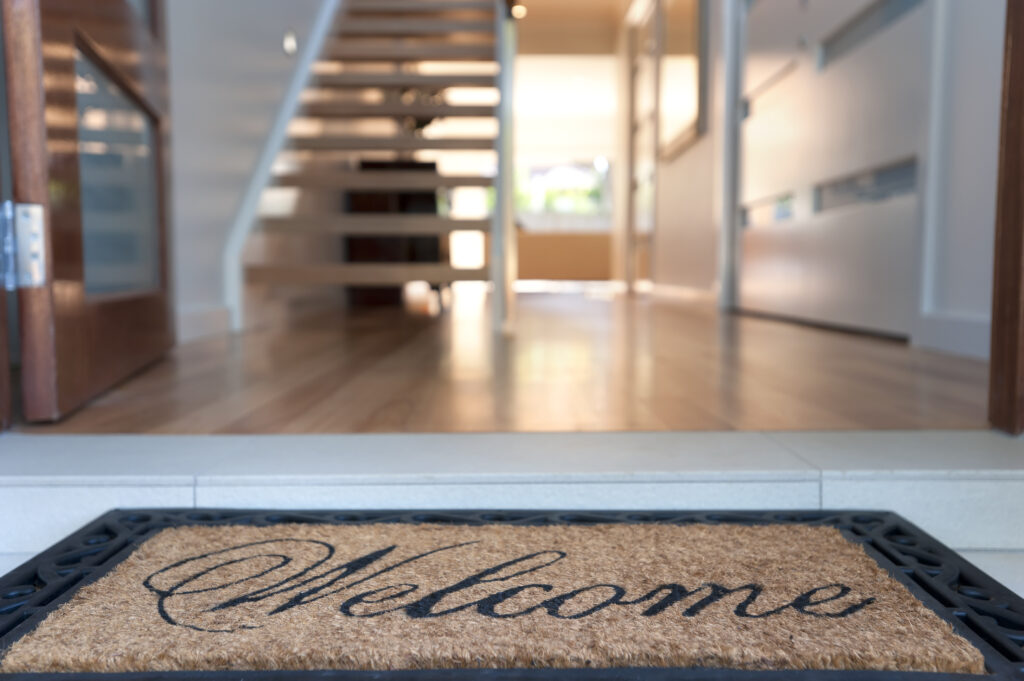
Radiant in-floor heating systems are becoming a more popular way to heat your home. It’s typically installed during the construction period as a boiler, pump, and gas lines are needed to complete the system. This form of heating uses hot water pumped through plastic tubing. It’s laid out in a serpentine pattern underneath the flooring to heat the house.
In-floor heating is a great way to add a touch of luxury to your space. The chilly winter evenings no longer require slippers and the air around you feels cozy. This addition to your home is a great way to upgrade your most trafficked spaces, allowing all family and friends to enjoy its benefits. Continue reading our blog to explore the pros of radiant in-floor heating.
Uniform Heating
In-floor heating will allow uniform heating throughout your space. When your home is heated with only forced-air systems, locations of the vents determine which parts of the room are warmer and cooler. Underfloor radiant heating warms the entire floor equally, meaning you will be comfortable at lower temperature levels because you won’t have cold spots or drafts.
Non-Allergenic
Radiant in-floor heating systems directly warm the flooring of the home. This heating is great option for families that are prone to allergies. Any time a forced-air systems is turned on, instantly dust particles are disturbed and scatter into the air being breathed in. In-floor heating will warm the space more evenly without agitating allergies.
Energy Efficient
In-floor heating is 25 percent more efficient than forced-air systems, which push warm air through ductwork that’s susceptible to leaks and will ultimately expend more energy to heat the home. Additionally, the space between vents allows warm air to cool before making it to the other side of the room. With inconsistent temperatures, the thermostat sensor will read incorrectly and keep the heat running constantly. By not using air ducts for distribution, radiant in-floor systems eliminate these heat loss issues and retain more of the warm air.
Minimal Maintenance
Unlike forced air heating, there are no maintenance costs with radiant floor heating. Depending on the brand you choose, some companies even guarantee their product for decades. In-floor heating allows you to skip the bills that come with annual furnace checks and air filter replacements and spend that money elsewhere.
Safety
Radiant in-floor heating is one of the safest heating options for your home, especially a home with children. In-floor heating is completely enclosed while other heating options are not. Old fashioned radiators may be a fun piece of history that comes with an older home, but they also come with a glaring warning sign. Radiators can pose as a safety hazard and cause burns as their pipes heat up. Not only can an adult be burned who is aware of the heat coming from the radiator, but it can be a serious hazard to children.
For all your heating and cooling needs, trust the HVAC experts at WestAIR. Contact us today to learn more about in-floor heating.
This entry was posted in Energy Savings,Heating and tagged Heating and cooling, low maintenance heating solutions, Radiant infloor heating, WestAIR
7 Tips for Extending the Lifespan of HVAC Equipment
Posted on by WestAIR Heating & Cooling

When it comes to weather, Minnesota is a place of extremes. Our harsh, bitterly cold winters and hot, humid summer days make a functioning furnace and air conditioner crucial to a comfy home. Follow these tips for extending the lifespan of HVAC equipment to get the most out of your system.
Schedule Preventative Maintenance Twice Annually
Have your system professionally serviced before each heating and cooling season for a thorough tune-up, cleaning, and maintenance service to ensure peak performance and efficiency. Your technician will also catch minor issues to prevent costly repairs later on, as well as help you decide if it’s better to repair or replace.
But don’t wait for maintenance service or a total breakdown to have your system inspected. If you notice strange sounds or smells, decreased efficiency or performance, or any other warning signs, call your local HVAC professionals to diagnose and repair the issue before it gets worse.
Have Ductwork Professionally Cleaned Every Other Year
Dirt, dust, pollen, and other debris naturally settle inside your ductwork over time. This buildup not only impacts airflow and efficiency, but it also becomes a breeding ground for bacteria. As your HVAC unit pumps air to the home, these contaminants get blown out with it and decrease your indoor air quality.
Schedule professional duct cleaning service once every two years to help maintain air quality and reduce stress placed on the system.
Maintain a Clean Air Filter
Clogged filters decrease airflow, forcing the system to work harder and experience a higher level of wear and tear. They’re also the number one cause of breakdowns. Remember to clean or change your HVAC system’s air filter every month.
Take Care of the Condenser Unit
While A/C condenser units are designed to withstand the elements, they’re not invincible. Inspect your condenser for any damage or debris buildup on occasion, especially after severe storms and instances of hail. Additionally, give the unit two to three feet of space to easily and efficiently draw in air. Keep the unit and surrounding space clean and clear of obstructions as well as grass clippings, leaves, branches, dirt, and other debris.
Check the Drainage Pipe Regularly
HVAC systems feature a PVC pipe on the indoor unit that leads outside to drain excess condensation. Serious damage to this outlet line can result in expensive repairs, so inspect yours regularly for blockages, debris, and any other issues. Be sure to do so more frequently in winter due to the potential of ice or snow deposits.
Invest in a Programmable Thermostat
Being strategic with your thermostat can help lower utility bills and stress on your system. However, constantly adjusting the temperature can have the opposite effect. With a programmable thermostat, you can preset temperature and humidity levels over multiple days without worrying about manual adjustments.
Ease Stress on the System in Other Ways
Give your HVAC system a break whenever possible to maximize its performance and useful life. For more information, check out our helpful guides to optimizing HVAC efficiency in the winter and summer.
Heating and cooling systems contribute up to half of a home’s energy consumption, and we rely on them throughout the year in our state. Use this guide to extending the lifespan of HVAC equipment to keep the air in your home clean and comfy for years to come.
Backed by over 30 years of industry experience, locally owned and operated WestAIR has the knowledge and expertise for all your heating, cooling, and indoor air quality needs. Contact us to learn more about our services.
This entry was posted in AC,Air Conditioning,Cooling,Duct Cleaning,Energy Savings,Fall,Furnace,Health Tips,Heating,Humidity,HVAC Maintenance,Indoor Air Quality,Tips,Winter and tagged A/C, A/C maintenance, A/C Tips, Air conditioner maintenance, Air filters, Condenser Unit Maintenance, Duct cleaning, Energy savings, Energy-Saving HVAC Tips, Extending the Lifespan of HVAC Equipment, Furnace Maintenance, Furnace Tips, Homeowner Education, HVAC Education, HVAC Maintenance, HVAC Maintenance Tips, HVAC tips, Preventative Maintenance, Programmable thermostat
7 Winter Furnace Maintenance Tips
Posted on by WestAIR Heating & Cooling
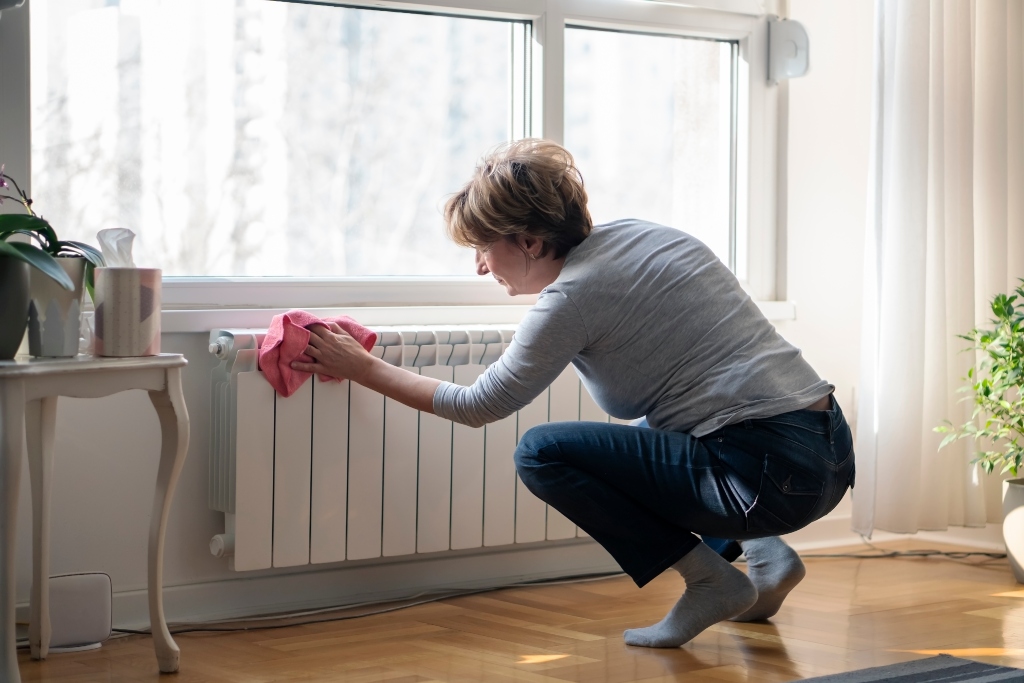
We rely on our heating systems a lot during Minnesota’s long, brutal winters. As we continue through the coldest months of the year, homeowners should take steps to minimize stress on their HVAC system to help prevent inconvenient breakdowns and costly repairs. Use these winter furnace maintenance tips to enjoy optimal performance, efficiency, and comfort all season long.
- Keep the air filter clean. A clogged filter forces the HVAC system to work harder, decreases efficiency, and is also the most common cause of breakdowns. Be sure to change or clean your air filter every month.
- Maintain a clear, clean area around the unit. Giving your furnace room to breathe promotes safe, efficient operation, as well as easy access to the unit for you or your HVAC specialist if necessary. As a general rule, give your furnace or indoor air handling unit three feet of clearance and clean the space regularly.
- Inspect flue pipes for damage. Your furnace naturally produces gases during the combustion process, and flue pipes carry these gases to your home’s ventilation system to be safely exhausted. Check the pipes for any damage that could be leaking CO into the home, as well as signs of soot and/or rusting. Have an experienced HVAC technician inspect any issues immediately.
- Clean supply and return vents. Supply vents feed warm air produced by your furnace to your home; return vents pull old indoor air and deliver it to the HVAC system to maintain indoor air quality and comfort. Cleaning them helps prevent dust and other airborne irritants from getting into the air you breathe or sucked back into the system.
- Check for signs of dirty ductwork. Air ducts carry air between your HVAC system and home and naturally collect dirt, dust, and other debris over time. Issues to look for include mold around your vents or furnace, excessive dust accumulation (especially around vents), inconsistent heating throughout the home, unexplained increases in allergy symptoms and/or respiratory problems, and signs of a rodent or pest infestation. Schedule professional duct cleaning service if you see any of these, and plan to do so annually.
- Turn the temperature down but keep the system on. Turning the thermostat down at night or when the house is empty can help cut utility costs, but don’t turn the system completely off. Having to fire the furnace back up whenever you wake up or return home requires more energy and adds unnecessary stress. Just remember to go no lower than 55 degrees (or closer to 60 during extreme cold) to help prevent frozen pipes. For ultimate ease and efficiency, consider installing a programmable thermostat that lets you pre-set temperature settings for multiple days ahead of time.
- Don’t ignore the warning signs. Don’t wait for a complete breakdown to give your furnace the attention it needs. If you notice uneven or inefficient heating, unexplained spikes in energy bills, or any other furnace issue warning signs, call WestAIR for professional diagnosis and repair before the issue gets worse.
It may be the beginning of a new year, but we have a lot of cold days and harsh weather ahead of us yet. Follow these winter furnace maintenance tips to help your heating system run safely, efficiently, and uninterrupted for the rest of the season.
Trust the highly knowledgeable and experienced HVAC professionals at WestAIR for all your heating and cooling needs. Contact us to learn more.
This entry was posted in Duct Cleaning,Energy Savings,Furnace,Health Tips,Heating,HVAC Maintenance,Indoor Air Quality,Tips,Winter and tagged Duct cleaning, Duct cleaning service, Ductwork, Energy efficiency, Furnace Education, Furnace Maintenance, Furnace Maintenance Tips, Furnace Tips, Heating, Heating System, Heating System Education, Homeowner Education, Homeowner Tips, HVAC Maintenance, HVAC Maintenance Tips, WestAIR Heating & Cooling, Winter Furnace Maintenance Tips, Winter Heating Tips, Winter HVAC, Winter HVAC Safety, Winter HVAC Tips
Subscribe to Our Blog
With RSS feeds, you don't have to visit our site everyday to keep up to date. Simply subscribe to our blog via RSS or Email and our posts will come to you!
Search Blog Posts
Categories
Archives
- April 2024 (1)
- February 2024 (1)
- January 2024 (1)
- February 2023 (1)
- January 2023 (1)
- December 2022 (1)
- November 2022 (1)
- October 2022 (1)
- September 2022 (1)
- August 2022 (1)
- July 2022 (1)
- June 2022 (1)
- May 2022 (1)
- April 2022 (1)
- March 2022 (1)
- February 2022 (2)
- December 2021 (1)
- November 2021 (1)
- October 2021 (1)
- September 2021 (1)
- August 2021 (1)
- July 2021 (1)
- June 2021 (1)
- May 2021 (1)
- April 2021 (1)
- March 2021 (2)
- January 2021 (1)
- December 2020 (1)
- November 2020 (1)
- October 2020 (1)
- September 2020 (1)
- August 2020 (1)
- July 2020 (1)
- June 2020 (1)
- May 2020 (1)
- April 2020 (1)
- March 2020 (1)
- February 2020 (2)
- November 2019 (1)
- August 2019 (2)
- June 2019 (1)
- May 2019 (1)
- April 2019 (1)
- March 2019 (1)
- February 2019 (1)
- January 2019 (1)
- December 2018 (1)
- November 2018 (1)
- October 2018 (1)
- September 2018 (1)
- August 2018 (2)
- July 2018 (1)
- May 2018 (1)
- April 2018 (1)
- March 2018 (1)
- February 2018 (1)
- January 2018 (1)
- December 2017 (3)
- November 2017 (2)
- October 2017 (2)
- September 2017 (2)
- August 2017 (1)
- July 2017 (2)
- June 2017 (3)
- May 2017 (2)
- January 2017 (4)
- November 2016 (1)
- September 2016 (3)
- July 2016 (2)
- June 2016 (2)
- May 2016 (4)
- April 2016 (1)
- March 2016 (2)
- February 2016 (2)
- January 2016 (1)
- August 2015 (1)
- July 2015 (1)
- June 2015 (3)
- May 2015 (1)
- July 2014 (2)
- June 2014 (1)
- April 2014 (1)
- March 2014 (1)
- February 2014 (2)
- October 2013 (1)
- May 2013 (1)
- March 2013 (1)
- February 2013 (1)
- August 2012 (1)
- July 2012 (2)
- June 2012 (2)
- May 2012 (2)
- March 2012 (1)
- February 2012 (1)
- December 2011 (1)
- November 2011 (1)
- October 2011 (1)
- September 2011 (1)
- August 2011 (1)
- June 2011 (1)
- May 2011 (1)
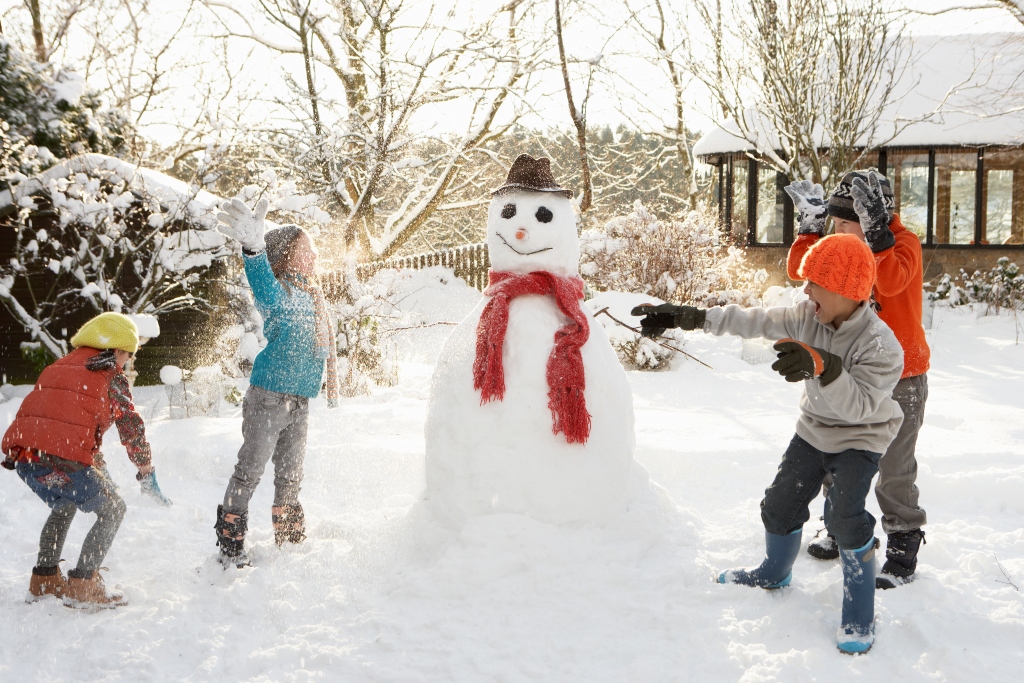
 Subscribe
Subscribe Subscribe
Subscribe